Did the East Palestine chemical fire lead to more toxic agents?
Some of the products of the chemical combustion, such as the carcinogen dioxin, may be more harmful than the initial chemicals.
This is the third installment of a series on the fallout occurring in East Palestine, Ohio after a train derailment and controlled fire led to thousands of gallons of chemicals to spread into the local environment. Unlabeled Part I and Part II can be found. Also, another Substack has written about this concern previously and has written follow-up articles as well if those are interested.
And note here that the information a hypothetical. We really don’t know to what extent, if there are any, of dioxin exposure to the individuals. Hopefully more information will come in the proceeding days if transparency is provided.
Fear and anger continue to mount for the residents of East Palestine, Ohio, as well as those in neighboring regions as many questions from the train derailment are left unanswered.
Most notably, many locals have complained about a lingering chemical smell in the air even though the EPA and other authorities have suggested that the air is safe to breathe—remarks that have clearly not assuaged concerns.
And just recently a video from Ohio senator J.D. Vance has gone viral, in which he disturbs a local stream, causing a strange film to appear in the water.
Plenty remains to be explained, and yet constant remarks that the area is safe doesn’t help provide much confidence to the locals.
But what’s gaining more concern is not the initial chemical leak, but the products from the combustion of thousands of gallons of chemicals which themselves are harmful.
Although I’ve reported on phosgene and hydrogen chloride as some of these concerning products from vinyl chloride combustion, there was one agent I overlooked.
Reader Et's Cinema PsychoMasonica left a comment in my previous post alerting me to one other product from the combustion, 2,3,7,8-TETRACHLORODIBENZO-P-DIOXIN, or dioxin for short, which should also be raising some serious concerns.
This molecule is now gaining more awareness, and was even covered in a recent article from The Washington Post.
So what exactly is dioxin, and why could it be more harmful than the initial reagents from the train?
Dioxin Overview
Dioxin refers to a class of compounds called polychlorinated biphenyls that exert numerous toxicological effects on the body. The most toxic of the group is 2,3,7,8-tetrachlorodibenzo-p-dioxin shown above (sometimes shortened to TCDD). The name of this group is derived from the base structure of 1,4-dioxin which makes up the central structure.
Production of dioxin and dioxin-like compounds is usually unintentional, as they tend to be a byproduct of manufacturing and combustion of chlorinated organic compounds such as pesticides, vinyl chloride, and even the combustion of waste material from recycling/garbage plants. Combustion of coal, wood, and even smoking may expose one to dioxin if chlorinated organic compounds are present.
One of the most well-known exposure incidents of dioxin was during the Vietnam War, in which the use of Agent Orange, a combination of various pesticides, was used. The trace levels of dioxin formed from the production of the pesticides led to exposure of American soldiers. As of now many veterans are still suffering from exposure to Agent Orange, including due to minute exposure to dioxin.
Unlike Vietnam War veterans, we are exposed to dioxins on a daily basis either through foods, the air, soil, or water. However, for us the most common route of exposure is through the consumption of animal products, which may accumulate dioxin.
That’s because of the highly lipophilic (fat-loving) nature of dioxins, as well as their extremely long half-lives. Dioxins are considered to be “forever chemicals” (“persistent organic pollutants” is what the EPA uses) because they persist in the environment for a long time.
Animals such as cows, chickens, or pigs may graze on grass or feed contaminated with pesticides and dioxin. This leads to possible build-up of dioxin within the animals which remain in the fat of these animals. Thus, when we consume these animals we are likely consuming more concentrated forms of dioxin.
Dioxin Toxicity
Dioxin has widespread effects on the body including on the endocrine system, immune system, and other biochemical systems.
However, the main concern over dioxin exposure is the increased risk of cancer.
In 1997 the International Agency for Research on Cancer (IARC) labeled dioxin a class I carcinogen due to strong evidence from animal studies, although at the time limited human evidence was available.
The recommendation was based on assessments from industrial plants and cancer rates of workers, which is outlined in the following Table from Streenland, et al.1:
After this recommendation various agencies began following suit, and as of now dioxin is considered to be a carcinogen.
Interestingly, although dioxin is recognized as being carcinogenic evidence so far has not pointed to any genotoxic/mutagenic properties of dioxin. That is to say, dioxin appears to increase the risk of cancer without causing direct damage to our DNA.
The actual mechanism of this carcinogenesis appears to be derived from dioxin’s interaction with the a cytosolic receptor called the aryl hydrocarbon receptor (AHR).
AHR is found all throughout the body and in various cells. Initially thought to be a transcription factor for the liver isozyme CYP1A1 it was later found that the receptor is responsible for many cellular processes including cellular differentiation, and is apparently a carryover from invertebrates where the main role of AHR is in development.
CYP1A1 is involved with metabolism of environmental toxins, and thus it was assumed that activation of AHR may occur through exposure to various toxic compounds as a means of upregulating CYP1A1 and mediating toxin exposure. However, AHR is activated by many different ligands such as plant-derived compounds, as well endogenous compounds produced via tryptophan metabolism, suggesting that many different compounds can readily activate AHR (Shinde, R., & McGaha, T. L.2).
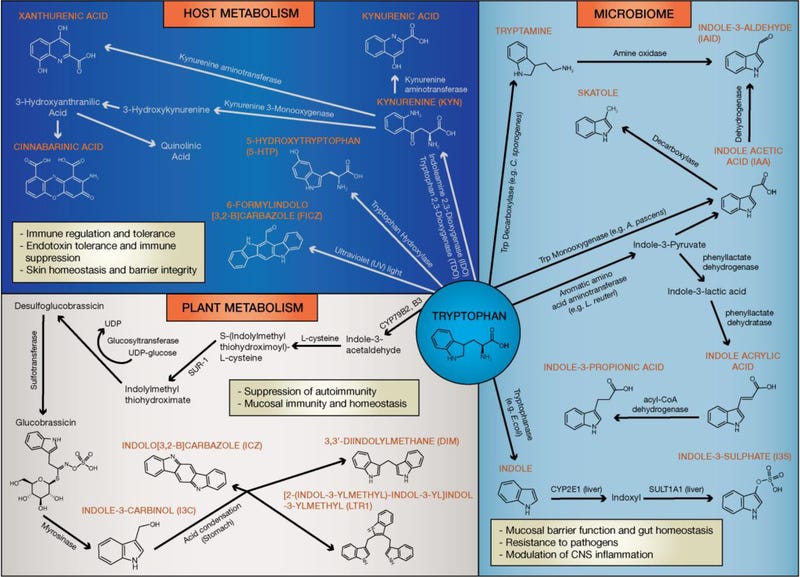
Thus, the activation of AHR by dioxin may be due to shared molecular structures, and the effects of AHR activation are critical for various organ and cellular functions.
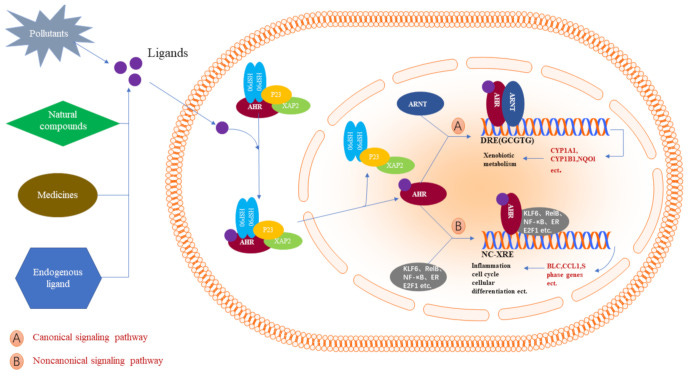
As such, the toxicity of dioxin is derived from the homeostatic balance of AHR activation. Because of this method of toxicity/carcinogenicity the actual role of AHR has been rather controversial.
That is to say, does extensive activation of AHR lead to tumor suppression, or tumor promotion? Is AHR activation pro-inflammatory, or anti-inflammatory?
Toxicological profiles of dioxin have been generally derived from animals, in which exposure to dioxin has shown serious complications.
This can be found in a very exhaustive report on Agent Orange released in 20183, which I encourage people to read for more extensive coverage of all the compounds in Agent Orange:
As will be discussed in more detail in Chapters 6–11, studies performed in animal models have indicated that exposure to TCDD adversely affects the heart, the skin, and the immune, endocrine, and reproductive systems and increases the incidence of cancers of the liver, skin, thyroid, adrenal cortex, hard palate, nasal turbinates, tongue, and respiratory and lymphatic systems (ATSDR, 1998; Barouki et al., 2012; Birnbaum, 1994; Huff et al., 1994; Knerr and Schrenk, 2006; Tian et al., 2015). When TCDD has been administered to pregnant animals, birth defects—such as cleft palate, malformations of the reproductive organs of male and female progeny, and abnormalities in the cardiovascular, pulmonary, endocrine, skeletal, and nervous systems—have been observed. Of course, effects arising from perinatal exposure are not in question for Vietnam veterans themselves, but this activity is of concern with respect to their offspring.
However, the interspecies differences in AHR activation suggests, again, that animal models may not be reflective of human models.
Of note, a review from Xu, et al.4 which looked at species differences in AHR concluded with the following remarks:
AhR has a long evolutionary history of enabling cells to adapt to various conditions. This protein can interact with compounds from the environment, diet, and microbiome and is ubiquitous in many human and animal tissues, which signifies that AhR has a vital role in growth and development. Early studies on AhR mainly focused on the toxicological reactions caused by dioxins and other environmental toxicants with a high affinity for AhR without paying attention to the possible species differences in AhR toxicity. Later, toxicologists found species differences in AhR toxicity, and this phenomenon has also been observed regarding recently discovered endogenous AhR ligands. With the discovery of the new role of AhR in mammals, many AhR ligands with well-defined health-promoting effects have been researched as potential drugs to target AhR for the treatment of many diseases. Given the known physiological differences between species after AhR activation, much of the data generated from inbred rodent model systems cannot be directly extrapolated in human cases. Therefore, it is necessary to elucidate the biochemical and molecular mechanisms of exogenous and endogenous ligands that can differentially regulate AhR functionality and its downstream responses.
As noted, the growing role of AHR may require a reexamination of its role in dioxin exposure, as it’s possible that AHR may provide some buffering capacity in humans not seen in other organisms.
Now, does that mean that dioxin is inherently safe?
Given that much is not known about dioxin and human exposure, the only way of capturing real-world evidence is unfortunately through accidents.
Aside from the exposure to Vietnam veterans, several other exposures have taken place.
Cases of Dioxin Exposure
Yusho Disease in Japan
In 1968 over 2,000 people living in Western Japan became intoxicated by high levels of dioxin and dioxin-related compounds that had contaminated rice bran oil.
Supposedly, the oil came from the Kanemi Company in Kyushu, Japan. The rice bran oil was deodorized via heating, and it appears that the heating coils used relied on various polychlorinated compounds, which became perforated and began leaking into the oil.
The oil was later sold to farmers and consumers, which eventually lead to widespread ingestion and symptom onset.
A review from Furue, et al.5 recounts the symptoms and events, which would later come to be know as Yusho disease, or just Yusho:
The intoxicated victims exhibited various symptoms including general malaise, headache, abdominal pain, paresthesia/numbness/pain of the extremities, joint swelling and arthralgia, cough and sputum, and Meibomian gland hypersecretion [8,9]. Among them, most characteristic features were chloracne and hyperpigmentation [8,9,10,11,12]. Laboratory examination revealed an elevation of serum triglyceride levels [13]. These disorders are collectively called Yusho (“oil disease” in Japanese).
The most important physical symptoms were the presence of skin legions and acne generally caused by high exposure to chlorinated dioxins and benzofurans; a phenomenon described by the portmanteau chloracne. This generally occurs along with hyperpigmentation where regions of the skin become extremely darkened.
Furue, et al. suggests that these phenomena of chloracne and hyperpigmentation may be related to hyper activation of AHG, which causes hyperkeratinization* (overproduction of keratin) and reduced sebaceous gland activity. In melanocytes, AHR activation leads to over production of melanin, and thus the darkening of skin:
*Hyperkeratosis changed to hyperkeratinization. Hyperkeratosis is a unique disease in which thick layers of keratin are produced on the skin.
The same effect of AHR activation can occur in tracheal epithelia which also express AHR, leading to production of mucus and coughing in those exposed to dioxin. And in ganglion nerves paresthesia (tingling and prickly sensation in extremities) may also occur as well:
Unfortunately, cancer diagnosis and mortality in the intoxicated individuals appear elevated when compared to others in the region not exposed to the compounds (emphasis mine):
A mortality study of patients with Yusho was conducted in 2007, 40 years after the 1968 incident, and it revealed that the mortality rates for all cancers, lung cancer, and liver cancer were significantly increased in male patients with Yusho compared with that in the general male population [122]. A similar epidemiological study was conducted in patients with Yucheng in Taiwan in 2008, 30 years after the 1979 incident, and the results illustrated that the mortality rates associated with all cancers, cardiovascular diseases, and musculoconnective tissue diseases were significantly higher than those of the general population [123]. A meta-analysis of Yusho and Yucheng studies revealed that the morality rates attributable to all cancers, lung cancer, cardiac diseases, and liver diseases were increased in males, whereas that associated with liver cancer was elevated in females [124]. Updated Yusho cohort data on the standardized mortality ratio (SMR) for the period of 1968–2017 revealed that increased mortality was observed for all cancers (SMR = 1.22, 95% confidence interval [CI] = 1.02–1.45) and lung cancer (SMR = 1.59, 95% CI = 1.12–2.19) among males, and increased mortality was observed for liver cancer among females (SMR = 2.05, 95% CI = 1.02–3.67) [125]. By contrast, relative and net survival were not affected by dioxin exposure in patients with Yusho [126,127]
Furue, et al. notes the controversy around dioxin and dioxin-like products on cancer. However, the epidemiological evidence from Yusho suggests that a real-concern over increased cancer risk is warranted.
The Seveso Plant Accident
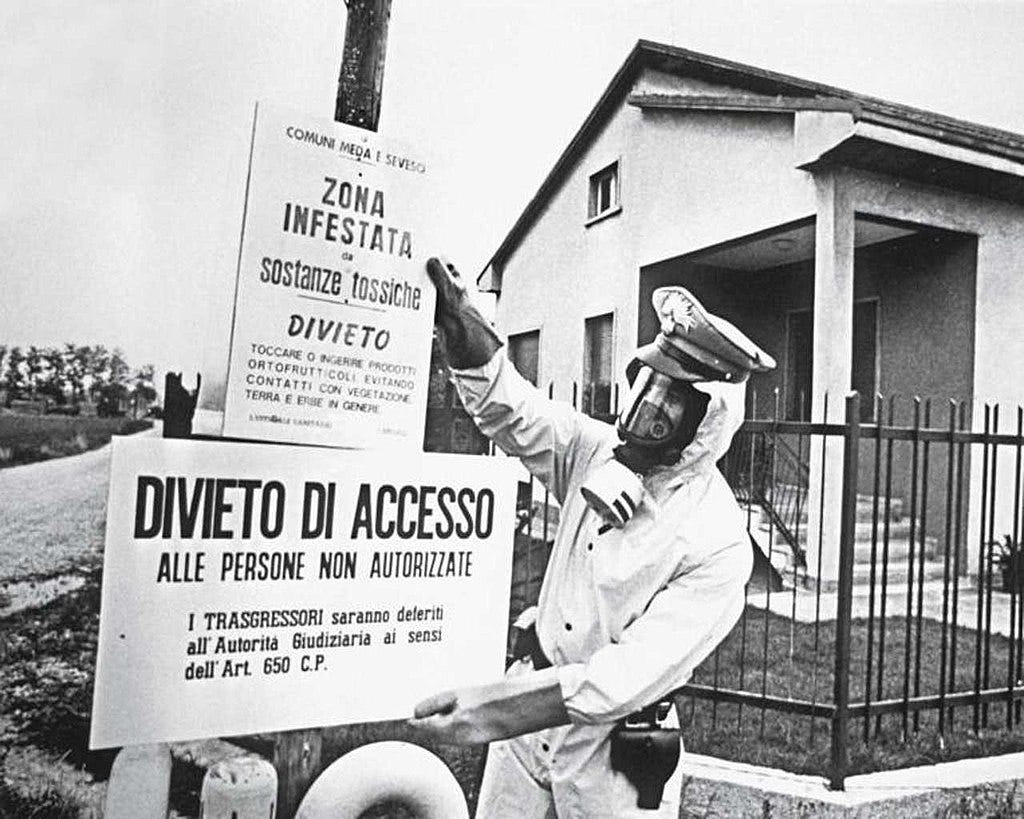
In 1976 a runaway chemical reaction at a plant located in Meda, Italy led to the release of a large chemical cloud into the local environment.
At the time the plant was manufacturing the compound 2,4,5-trichlorophenol which acts as an intermediate for various pharmaceutical and cosmetic products. However, various circumstances led to overheating, production of dioxin, and the eventual cloud of gas. It’s assumed that 15-30 kg of dioxin was spread over the local area contaminating plant and wildlife, as well as residents.

The event led to widespread exposure to tens of thousands of locals, leading the event to be named after the municipality of Seveso, and became known as the largest epidemiological exposure of residents to dioxin in history.
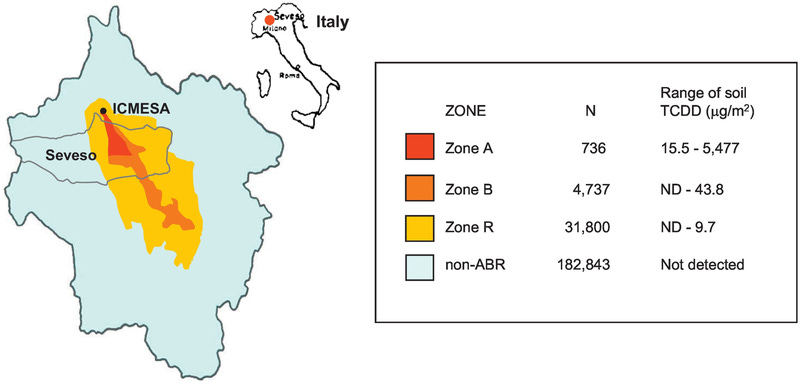
In the days after the event thousands of livestock had died, with many more being killed in order to reduce the risk of dioxin making its way into the food supply. Many reports of nausea and eye irritation were noted in those in the path of the cloud, with up to 200 cases of chloracne eventually being reported.
Blood samples were also taken of individuals exposed to the dioxin released, with periodic samples taken over the course of many years leading to one of the longest studies on dioxin toxicity ever, including multigenerational assessment on dioxin’s effects and the creation of an analytical technique to measure dioxin serum levels.
Much of this work is being done by Eskenazi, et al.6 who noted in a recent review that noted various long-term issues in those directly exposed to the accident, with reviews noting that cancer mortality rates were higher in those closer to the accidents:
Table 2 presents a summary of health studies in Seveso residents. Clearly, TCDD exposure resulted in chloracne, and children were most susceptible. The results of Seveso studies also suggest that early-life exposure to relatively high doses of TCDD may have effects on both male and female fertility. However, some of the most compelling evidence is that TCDD exposure increases risk for cancer, and within women, potentially breast cancer. There may be other individual cancers that are increased such as thyroid and blood cancers, but these results are limited by sample size or exposure assessment. TCDD seems to also affect cardiometabolic outcomes including metabolic syndrome, but results on diabetes are conflicting. Evidence for other endpoints examined are less compelling but follow-up may still be warranted of those who were youngest at the time of the accident as they are just beginning to enter middle age.
Although sperm count appeared to have been affected, it’s worth noting that dioxin is an endocrine disruptor which may play into the fertility aspect.
Fear of Uncertainty for East Palestine
In both cases of dioxin exposure noted above the symptoms were very apparent for many of the individuals, with signs of chloracne and hyperpigmentation being recognized.
In the case of East Palestine, the event is not all too clear. Here, the level of exposure to individuals is unknown, with the biggest difference being that exposure to dioxin in East Palestine is through dioxin byproduct formation, and so the level of exposure may not be comparable. There doesn’t appear to be signs of severe exposure to dioxin, which is also cofounded by the presence other combusted products such as hydrogen chloride which was noted by the strong smell of bleach immediately after the controlled fire.
The closest comparison would be the exposure to Agent Orange in Vietnam veterans, in which it appears there is an association between dioxin exposure and cancer risk, but there still exists many confounding variables.
As a high molecular weight molecule it appears that dioxin doesn’t exist in the air, but rather accumulates in soil and water beds. It’s possible that exposure during the active fire may increase the risk of dioxin inhalation, but at the point that the fire has subsided for several days any dioxin may likely exist on surfaces. In which case, concern can be raised towards direct soil exposure of pets and children, as well as any plants and livestock that may be eaten. Again, the lack of uncertainty doesn’t mean that these would be inherently dangerous—we don’t even know if dioxin is actually being produced from the chemical fire, and to what level, but that the lack of information doesn’t immediately assume the safety of these local environment.
But more importantly, what the Seveso incident has noted is that dioxin serum measures are possible. Rather than just testing the local environment, it may be in the best interest to see if blood tests for dioxin, as well as other toxins may be possible for locals in order to collect epidemiological data.
Questions continue to mount about whether East Palestine is actually safe, and unless information is provided to locals there’s no way for them to trust the actual proclamations made by local authorities, and especially not from the train company.
Substack is my main source of income and all support helps to support me in my daily life. If you enjoyed this post and other works please consider supporting me through a paid Substack subscription or through my Ko-fi. Any bit helps, and it encourages independent creators and journalists such as myself to provide work outside of the mainstream narrative.

Steenland, K., Bertazzi, P., Baccarelli, A., & Kogevinas, M. (2004). Dioxin revisited: developments since the 1997 IARC classification of dioxin as a human carcinogen. Environmental health perspectives, 112(13), 1265–1268. https://doi.org/10.1289/ehp.7219
Shinde, R., & McGaha, T. L. (2018). The Aryl Hydrocarbon Receptor: Connecting Immunity to the Microenvironment. Trends in immunology, 39(12), 1005–1020. https://doi.org/10.1016/j.it.2018.10.010
National Academies of Sciences, Engineering, and Medicine. 2018. Veterans and Agent Orange: Update 11 (2018). Washington, DC: The National Academies Press. https://doi.org/10.17226/25137.
Xu, X., Zhang, X., Yuan, Y., Zhao, Y., Fares, H. M., Yang, M., Wen, Q., Taha, R., & Sun, L. (2021). Species-Specific Differences in Aryl Hydrocarbon Receptor Responses: How and Why?. International journal of molecular sciences, 22(24), 13293. https://doi.org/10.3390/ijms222413293
Furue, M., Ishii, Y., Tsukimori, K., & Tsuji, G. (2021). Aryl Hydrocarbon Receptor and Dioxin-Related Health Hazards-Lessons from Yusho. International journal of molecular sciences, 22(2), 708. https://doi.org/10.3390/ijms22020708
Eskenazi, B., Warner, M., Brambilla, P., Signorini, S., Ames, J., & Mocarelli, P. (2018). The Seveso accident: A look at 40 years of health research and beyond. Environment international, 121(Pt 1), 71–84. https://doi.org/10.1016/j.envint.2018.08.051

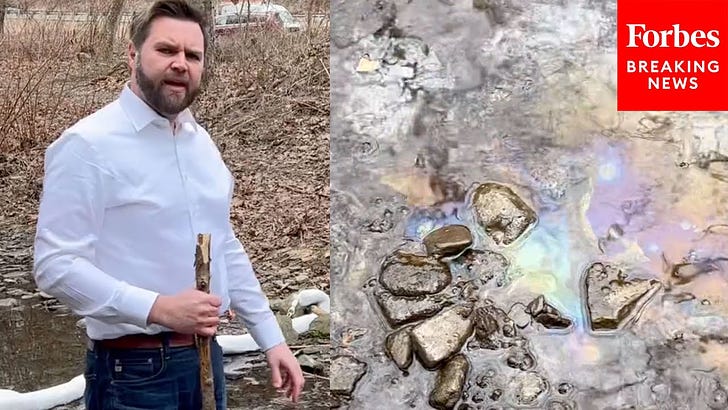


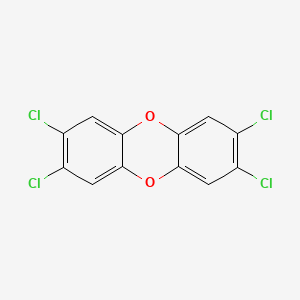
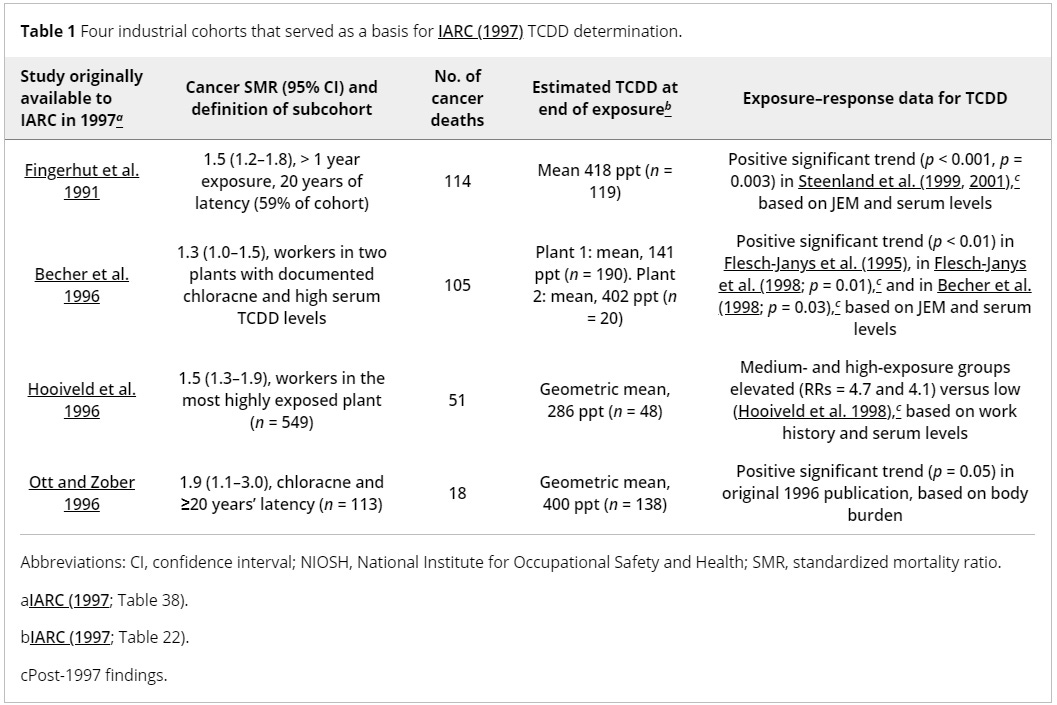
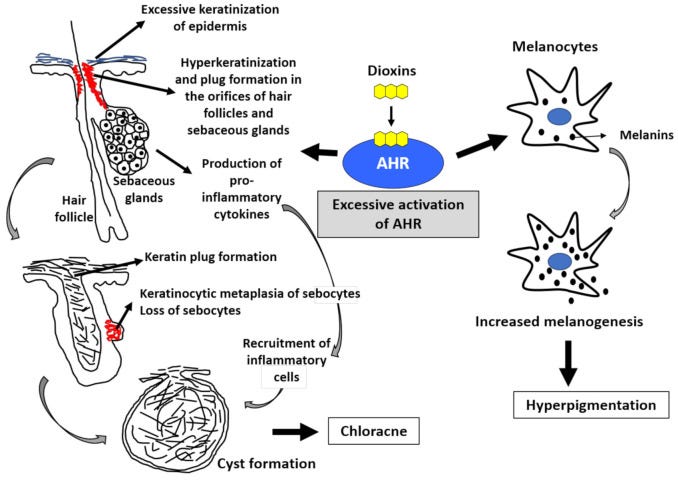
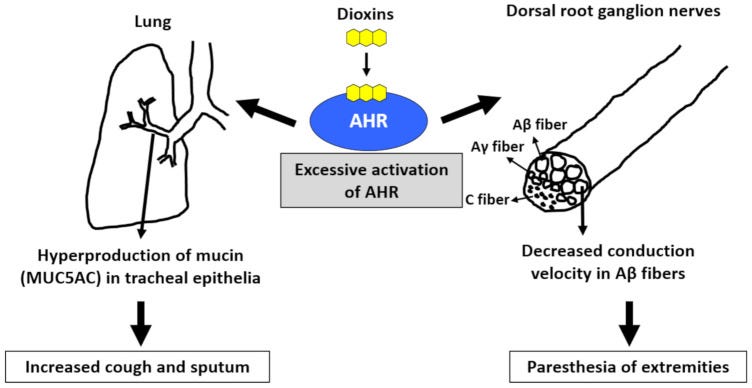
Edit: Minor grammatical mistakes were corrected such as "social" to "soil". If any other awkward sentences or wording is noticed please let me know. Sometimes it feels like my hands have a mind of their own...
This essay is really smart and cautious and a great service. Thank you. I hope you can update because there is a lot of opinion rushing forth that doesn’t even contemplate the magnitude of what has happened. The Amish and others are our brothers and sisters-- we need the Spirit of Truth and Love at our hands to help them. Thank you again for your professionalism.